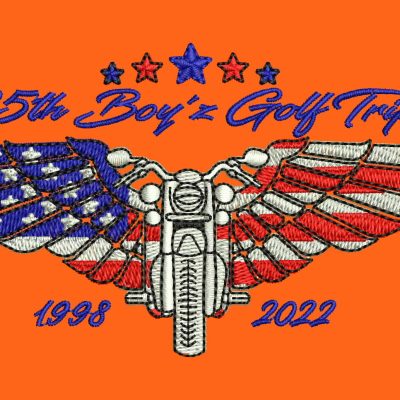Effective Digitizing for Embroidery: Quick Turn-around
Effective Digitizing for Embroidery: Quick Turn-around
Blog Article
Grasping the Needlework Digitizing Process: Your Ultimate Guide
Needlework digitizing is a thorough craft that needs precision and expertise to translate detailed styles into digital layouts for equipment needlework. As artisans start this journey to master the embroidery digitizing process, an extensive understanding of the fundamentals establishes the foundation for quality. Beyond the primary knowledge exists a realm of innovative software, specialized tools, and nuanced methods waiting to be checked out. By diving right into the nuances of digitizing, one can open a globe of creative possibilities and boost their embroidery jobs to new elevations.

Understanding Embroidery Digitizing Basics
Embroidery digitizing basics form the structure whereupon elaborate layouts are converted into machine-readable styles for specific stitching. This first action in the needlework digitizing process is critical for making certain that the last stitched product is a devoted depiction of the original design. Understanding embroidery digitizing basics involves realizing essential concepts such as stitch types, stitch instructions, density, padding, and draw payment.
Sew kinds play an essential duty in identifying the aesthetic and textural result of the stitched style. By selecting the appropriate stitch type, whether it be satin, fill, or running stitch, digitizers can achieve the preferred effect and enhance the general quality of the needlework. Additionally, stitch direction affects the flow and measurement of the design, while thickness identifies the spacing and insurance coverage of the stitches.
Moreover, underlay sewing offers security to the design by safeguarding the textile and protecting against distortion during the embroidery process. Draw payment is another crucial consideration to combat the natural propensity of fabric to contract when sewn. Understanding these needlework digitizing essentials is basic for creating professional-quality stitched items.
Selecting the Right Digitizing Software Application
Picking the suitable digitizing software is an important decision that significantly affects the performance and quality of the needlework digitizing process. Digitizing for Embroidery. When selecting the best digitizing software application, it is vital to think about elements such as the complexity of styles you plan to produce, the user-friendliness of the software, the level of client assistance provided, and the compatibility with your needlework machine
There are numerous digitizing software alternatives readily available in the marketplace, ranging from standard programs for novices to sophisticated software application for expert digitizers. Some preferred choices include Wilcom EmbroideryStudio, Hatch Embroidery Software, and PulseID. These software application plans provide a broad variety of tools and functions to assist you produce intricate layouts effortlessly.
Before deciding, it is advisable to discover the different software program options through totally free tests or demos to determine which one finest suits your needs. Furthermore, reading evaluations and looking for suggestions from knowledgeable digitizers can give important insights into the toughness and weak points of each software (Digitizing for Embroidery). By meticulously examining your requirements and contrasting the functions of different digitizing software application, you can make an informed selection that boosts your embroidery digitizing operations
Digitizing Tools and Strategies

Optimizing Layout Settings for Embroidery
Understanding the ins and outs of design settings is basic in attaining ideal results in the needlework digitizing procedure, structure upon the foundation laid by understanding digitizing devices and techniques. When maximizing design settings for needlework, it is crucial to consider variables such as stitch type, density, rug, pull compensation, and registration. Enrollment setups line up different elements of the layout properly, keeping general layout integrity.

Troubleshooting Common Digitizing Issues
When experiencing common digitizing issues throughout the needlework procedure, it is vital to understand the root triggers and carry out effective solutions quickly. One typical problem is stitch thickness concerns, where stitches might be also dense, causing the material to pucker, or as check out this site well sporadic, bring about gaps in the style. Adjusting the stitch thickness setups in the digitizing software application can help solve this issue.
An additional frequent challenge is string breaks during the needlework procedure. This can take place as a result of numerous reasons such as incorrect tension settings, dull needles, or utilizing low-grade string. Making certain correct upkeep of the embroidery maker, consisting of normal needle adjustments and tension modifications, can minimize the occurrence of thread breaks.
Additionally, layout registration mistakes can result in misaligned components within the needlework layout. Inspecting the layout placement in the digitizing software program and making required adjustments prior to stitching can assist in avoiding this issue. By attending to these usual digitizing concerns promptly and efficiently, you can make certain a smoother embroidery procedure and premium ended up items.
Final Thought
In conclusion, understanding the needlework digitizing process needs a strong understanding of the essentials, the appropriate selection of software application, and expertise of tools and methods. Maximizing style setups and troubleshooting usual digitizing issues are essential action in making sure top notch needlework results. By complying with these steps vigilantly, one can achieve precision and performance in the digitizing procedure.
Report this page